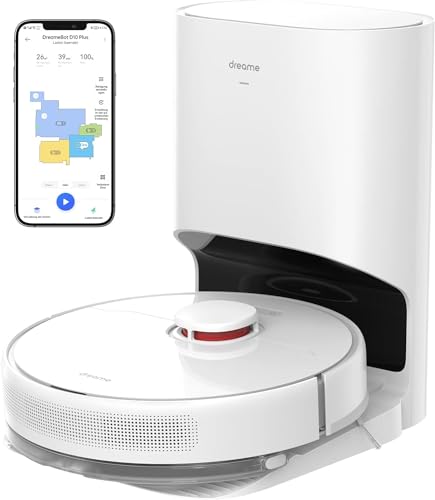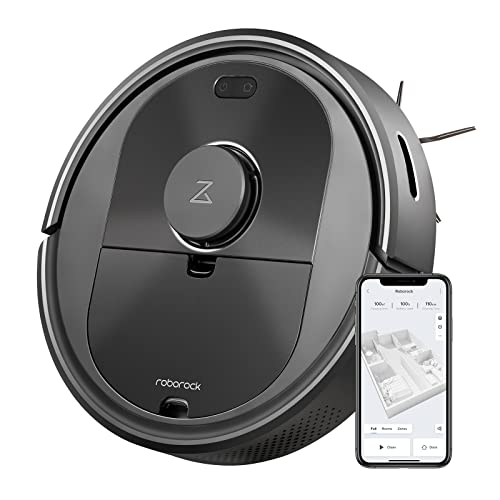The Reasons To Focus On Improving Lidar Vacuum Robot
페이지 정보

본문
 Lidar Navigation for Robot Vacuums
Lidar Navigation for Robot VacuumsA robot vacuum can help keep your home clean without the need for manual intervention. A robot vacuum with advanced navigation features is crucial for a hassle-free cleaning experience.
 Lidar mapping is a crucial feature that allows robots to move smoothly. Lidar is a well-tested technology developed by aerospace companies and self-driving cars for measuring distances and creating precise maps.
Lidar mapping is a crucial feature that allows robots to move smoothly. Lidar is a well-tested technology developed by aerospace companies and self-driving cars for measuring distances and creating precise maps.Object Detection
To allow robots to successfully navigate and clean up a home it must be able to recognize obstacles in its path. Laser-based best lidar robot vacuum makes an image of the surroundings that is precise, in contrast to conventional obstacle avoidance technology which relies on mechanical sensors that physically touch objects to identify them.
The data is then used to calculate distance, which allows the robot to construct an actual-time 3D map of its surroundings and avoid obstacles. Lidar mapping robots are therefore far more efficient than other navigation method.
The T10+ model, for example, is equipped with lidar vacuum robot (a scanning technology) that allows it to scan its surroundings and identify obstacles in order to determine its path accordingly. This will result in a more efficient cleaning as the robot is less likely to get stuck on the legs of chairs or furniture. This will help you save money on repairs and maintenance fees and free your time to work on other things around the house.
Lidar technology is also more efficient than other navigation systems used in robot vacuum cleaners. Binocular vision systems can offer more advanced features, such as depth of field, than monocular vision systems.
In addition, a higher number of 3D sensing points per second enables the sensor to provide more accurate maps at a much faster pace than other methods. Combining this with lower power consumption makes it easier for robots to operate between recharges, and prolongs the battery life.
In certain environments, like outdoor spaces, the capacity of a robot to recognize negative obstacles, such as holes and curbs, can be critical. Some robots like the Dreame F9 have 14 infrared sensor that can detect these kinds of obstacles. The robot will stop automatically if it senses an accident. It will then choose a different route and continue cleaning as it is directed.
Maps that are real-time
Lidar maps provide a detailed view of the movement and status of equipment at an enormous scale. These maps can be used for a range of applications, from tracking children's location to streamlining business logistics. In this day and time of constant connectivity, accurate time-tracking maps are essential for many businesses and individuals.
Lidar is a sensor that shoots laser beams and measures the time it takes for them to bounce off surfaces and then return to the sensor. This information allows the robot to accurately measure distances and make an accurate map of the surrounding. This technology can be a game changer in smart vacuum cleaners as it allows for a more precise mapping that can avoid obstacles while ensuring complete coverage even in dark areas.
A lidar-equipped robot vacuum can detect objects that are smaller than 2mm. This is in contrast to 'bump-and run models, which use visual information to map the space. It can also detect objects that aren't immediately obvious like remotes or cables and plot a route around them more efficiently, even in low light. It also detects furniture collisions and choose the most efficient routes around them. In addition, it is able to utilize the app's No-Go Zone function to create and save virtual walls. This prevents the robot from accidentally cleaning areas that you don't want to.
The DEEBOT T20 OMNI uses a high-performance dToF laser sensor that has a 73-degree horizontal and 20-degree vertical field of view (FoV). The vacuum can cover a larger area with greater efficiency and precision than other models. It also prevents collisions with objects and furniture. The FoV of the vac is wide enough to allow it to function in dark areas and offer better nighttime suction.
The scan data is processed using an Lidar-based local map and stabilization algorithm (LOAM). This creates an image of the surrounding environment. This algorithm incorporates a pose estimation with an object detection method to determine the robot's position and orientation. The raw points are downsampled by a voxel filter to produce cubes of an exact size. Voxel filters can be adjusted to get the desired number of points that are reflected in the filtering data.
Distance Measurement
Lidar utilizes lasers, the same way like radar and sonar use radio waves and sound to measure and scan the surroundings. It is commonly used in self-driving cars to avoid obstacles, navigate and provide real-time maps. It is also being used in robot vacuums to aid navigation and allow them to navigate around obstacles on the floor with greater efficiency.
LiDAR operates by sending out a series of laser pulses that bounce off objects within the room and then return to the sensor. The sensor records each pulse's time and calculates distances between the sensors and the objects in the area. This enables robots to avoid collisions, and to work more efficiently around furniture, toys, and other objects.
Cameras are able to be used to analyze an environment, but they don't have the same accuracy and efficiency of lidar. Cameras are also subject to interference by external factors like sunlight and glare.
A robot powered by LiDAR can also be used to perform an efficient and precise scan of your entire residence by identifying every object in its path. This lets the robot determine the most efficient route, and ensures it reaches every corner of your home without repeating itself.
Another benefit of LiDAR is its ability to identify objects that cannot be seen with cameras, like objects that are tall or are blocked by other objects like curtains. It is also able to tell the difference between a door handle and a leg for a chair, Lidar Vacuum robot and even distinguish between two similar items such as pots and pans or a book.
There are many different types of LiDAR sensor on the market. They vary in frequency and range (maximum distant), resolution, and field-of view. A majority of the top manufacturers offer ROS-ready devices, meaning they can be easily integrated with the Robot Operating System, a set of tools and libraries that make it easier to write robot software. This makes it simple to create a strong and complex robot that can be used on a variety of platforms.
Correction of Errors
The capabilities of navigation and mapping of a robot vacuum depend on lidar sensors to detect obstacles. Many factors can affect the accuracy of the mapping and navigation system. The sensor can be confused when laser beams bounce off of transparent surfaces like mirrors or glass. This could cause the robot to travel through these objects and not be able to detect them. This could cause damage to both the furniture and the robot.
Manufacturers are working on overcoming these limitations by developing more advanced navigation and mapping algorithms that use lidar data, in addition to information from other sensors. This allows the robot to navigate area more effectively and avoid collisions with obstacles. They are also improving the sensitivity of sensors. For instance, modern sensors are able to detect smaller and less-high-lying objects. This will prevent the robot from missing areas of dirt and debris.
Lidar is distinct from cameras, which can provide visual information as it emits laser beams that bounce off objects and return to the sensor. The time it takes for the laser beam to return to the sensor gives the distance between objects in a room. This information is used to map, identify objects and avoid collisions. lidar navigation robot vacuum also measures the dimensions of an area which is helpful in designing and executing cleaning routes.
Hackers can exploit this technology, which is good for robot vacuums. Researchers from the University of Maryland demonstrated how to hack into a robot vacuum's LiDAR by using an attack using acoustics. Hackers can intercept and decode private conversations between the robot vacuum by studying the audio signals generated by the sensor. This could allow them to steal credit card information or other personal data.
Check the sensor often for foreign matter, such as hairs or dust. This could cause obstruction to the optical window and cause the sensor to not move correctly. To correct this, gently rotate the sensor or clean it with a dry microfiber cloth. You may also replace the sensor if needed.
- 이전글Are You In Search Of Inspiration? Try Looking Up Robot Vacuum With Lidar And Camera 24.04.08
- 다음글This Week's Top Stories About Lidar Robot Vacuum And Mop Lidar Robot Vacuum And Mop 24.04.08
댓글목록
등록된 댓글이 없습니다.
